Recent excavations on Hatteras Island may have just uncovered the "smoking gun" that reveals what happened to the Roanoke settlers and finally brings the mystery of the "Lost Colony" to a close.
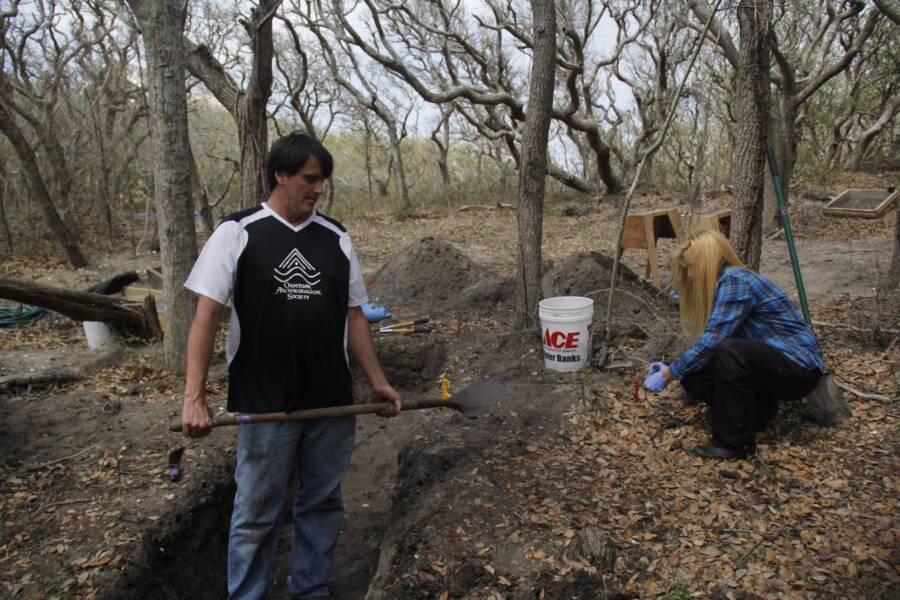
Finding Croatoan/FacebookScott Dawson, the author and amateur archaeologist seeking to put an end to the supposed mystery of the Roanoke Colony once and for all.
Large amounts of hammerscale, metal scraps left over from blacksmithing, that have recently been found on North Carolina’s Hatteras Island could finally settle the mystery of what happened to the “Lost Colony” of Roanoke.
These scraps, according to one local archaeologist, could provide definitive evidence that the English colonists, after suddenly abandoning the Roanoke settlement in 1585, had simply decamped for nearby Hatteras Island and begun living alongside the Croatoan Native American tribe.
During a recent speech at the Roanoke River Maritime Museum in Plymouth, North Carolina, author, museum proprietor, and president of the Croatoan Archaeological Society, Scott Dawson, announced his discovery. Together with fellow archaeologist and TV presenter Mark Horton, Dawson had been searching Hatteras for more evidence to support his theory about what happened to the “Lost Colony of Roanoke”: that it was never lost at all.
During their excavations, they came across the hammerscale, which the Daily Mail notes are “barely larger than a grain of rice.” These shavings are a byproduct of iron-forging techniques that, Horton and Dawson say, would have been unknown to the Croatoan tribe.
English settlers, however, would have been using the blacksmithing techniques that produced hammerscale. If Dawson is correct, this could be the “empirical, physical evidence” that solidifies his theory about the Roanoke mystery once and for all.
The Supposed Mystery Behind The “Lost Colony” Of Roanoke — And Why It Doesn’t Make Sense
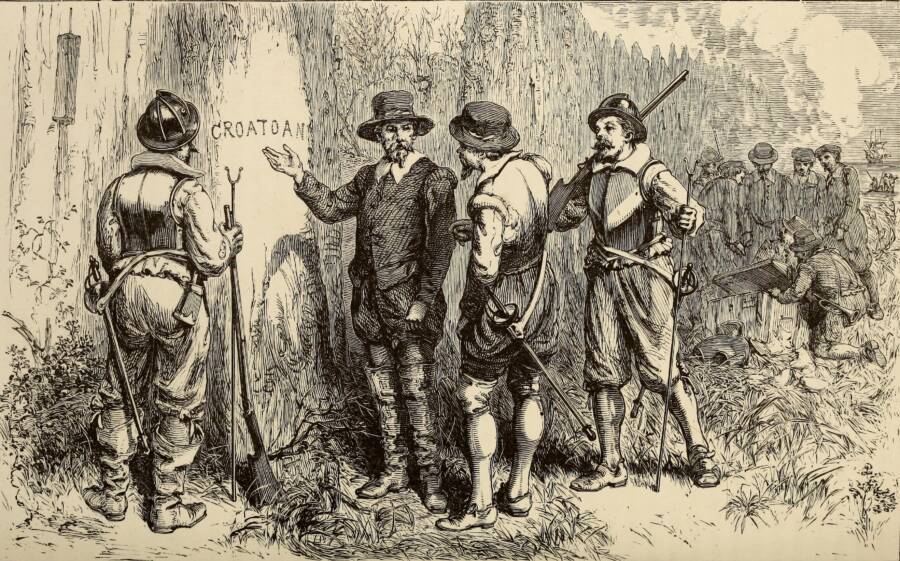
Wikimedia CommonsIllustration of the discovery of “CROATOAN” carved into a tree at the Roanoke Colony.
The mystery behind the Roanoke Colony has long been a foundational piece of American mythology.
As the story goes, in 1585, Sir Walter Raleigh established the colony in present-day North Carolina. About 120 people settled in the colony — but just five years later, none of them remained. When an English ship visited in 1590, the settlement was intact, yet the people had seemingly vanished all at once, as if into thin air.
The settlement was abandoned, and the only clue about what happened was a single word carved into a tree: “CROATOAN.”
In the more than 400 years since everyone seemingly vanished, numerous theories have sought to explain the fate of the Roanoke colonists. Some have suggested a terrible fate befell the Roanoke settlers, with rumors of cannibalism becoming pervasive. Others theorized that the colonists may have died off during a harsh winter.
Even the word “Croatoan” — the original name of Hatteras Island and the Native American tribe who lived there — developed its own morbid mythology.
Some have claimed that the poet Edgar Allan Poe, shortly before his death, had been muttering the word “Croatoan.” Amelia Earhart had allegedly scrawled the word in her journal shortly before her fateful final flight. Horror writer Ambrose Bierce had purportedly slept in a bed etched with the word mere nights before he vanished. The walls of the prison cell holding Wild West stagecoach robber Black Bart reportedly had “Croatoan” scratched into them — and he was never seen again after his release.
But there is no concrete evidence to suggest that any of this is actually true. Most likely, these stories were concocted later to add to the mystery surrounding Roanoke and the Croatoan tribe. What it shows, though, is how the story of the Lost Colony of Roanoke continued to both baffle and intrigue people for centuries.
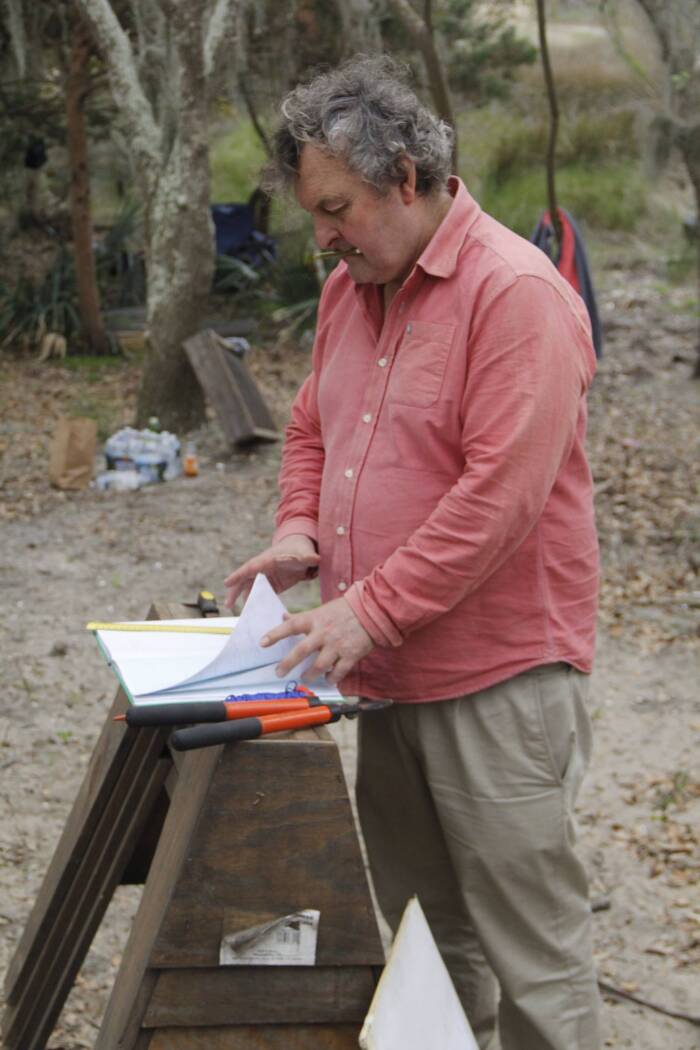
Finding Croatoan/FacebookArchaeologist Mark Horton, who has been assisting Dawson in excavations on Hatteras Island.
Scott Dawson wasn’t buying it, though.
“They say that the colony vanished and they left behind this cryptic message on a tree, ‘Croatoan,’ and no one knows what it means,” he said. “The reason they do this is mystery sells, right? But Croatoan is Hatteras Island. It’s clearly labeled on the maps.”
In 1937, playwright Paul Green penned The Lost Colony, a theatrical production about the Roanoke Colony that proved to be fairly popular. But Dawson believes that the whole narrative about Roanoke being lost was nothing more than “a marketing campaign” — one that evidently proved to be very effective.
His skepticism about the common Roanoke story eventually culminated in his book, The Lost Colony and Hatteras Island, in which he outlined his theory about the colonists, their close ties to the Croatoan tribe, and their eventual relocation to Hatteras Island.
Now, he’s found physical evidence to back up his claims.
The “Smoking Gun” On Hatteras Island That Could Finally Solve The Mystery Of What Happened To The Roanoke Colony
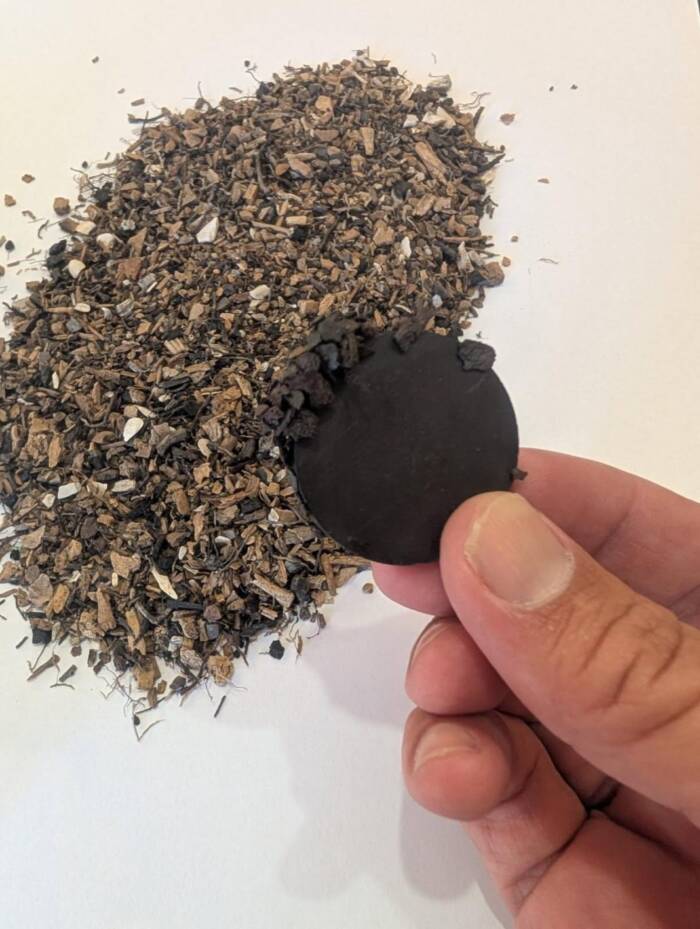
Scott DawsonA pile of hammerscale found on Hatteras Island, showing that European blacksmithing techniques were used there.
Dawson and Horton have been digging near the former Roanoke and Croatoan settlements for more than a decade, during which they uncovered numerous weapons and European artifacts on Hatteras Island.
Those discoveries provided some good support for Dawson’s theory, but the artifacts could just as easily have supported some of the more macabre theories about the colonists’ fates. As the researchers said, “coins and sword hilts could have got to Hatteras through trade or a passing settler.” Their most recent discovery, however, is a clear sign that European settlers were indeed living on the island.
“The hammerscale shows that English settlers lived among the Croatoans on Hatteras and were ultimately absorbed into their community,” Horton told the Daily Mail. “Once and for all, this smoking gun evidence answers any questions about the supposed mystery of the lost colony.”
Horton asserted that the Croatoan would not have been conducting the sort of blacksmithing that would produce hammerscale — but English settlers would have.
“You heat up an iron rod, and when you hit it, little pieces of metal fly off,” Dawson told the Island Free Press. “It gets walked over and forms a little pile, and no one gives it any mind, except for us, 400 years later.”
Forges were not temporary sites. Settlers wouldn’t have set one up only to move away shortly afterward. Thus, the presence of an English-style forge on Hatteras Island dating back to the 16th century is likely proof that Europeans stayed on the island as permanent residents.
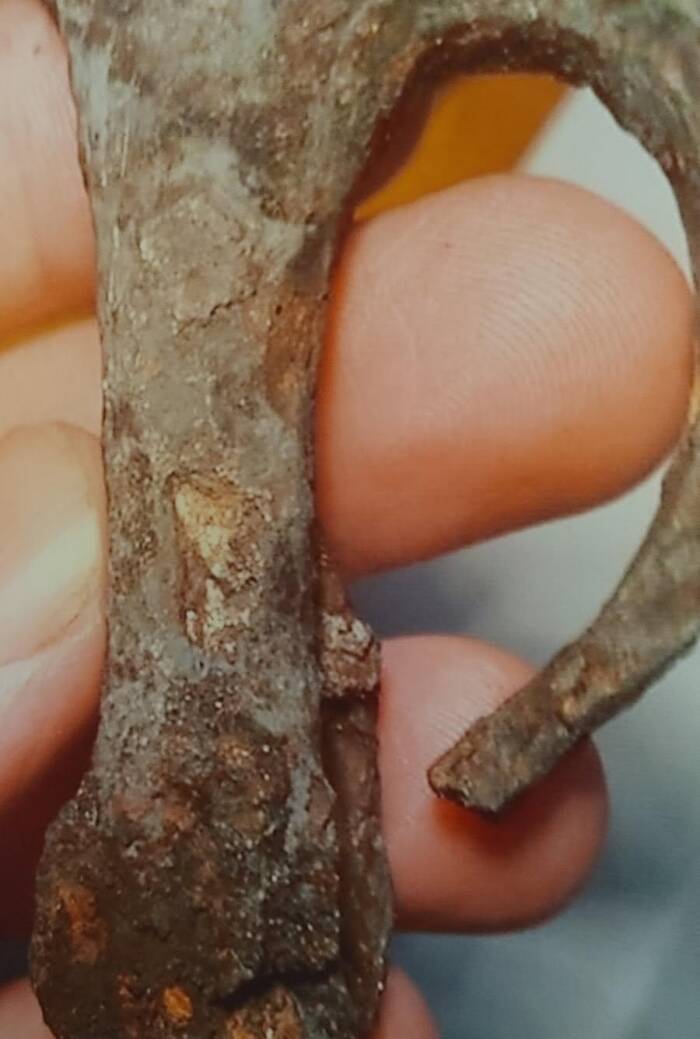
Scott DawsonMetal found at the Hatteras Island dig site.
“We have empirical, physical evidence coming out of the ground with the best professionals in the world behind it,” Dawson said. “This is showing a presence of the English working metal and living in the Indian Village for decades. We’re finding this whole metalworking workshop on the site and natives didn’t do that.”
Dawson also said that finding proof for this narrative is even more pressing as Hatteras Island becomes more developed.
“The archaeology is just a cherry on top, but the fact that we’re able to preserve all of this Croatoan material as well, that makes me happy because it’s in real danger of being lost,” he said.
As for the supposed mystery of the Lost Colony of Roanoke, Dawson believes its high time to retire it: “To say we were excited is an understatement. We finally had that ‘smoking gun’ evidence, so there is no need to keep regurgitating the fictional story that no one knows what happened to them.”
After learning about the truth behind the Lost Colony of Roanoke, learn about another enduring historical mystery: the location of the Oak Island treasure. Then, read about nine unsolved ancient mysteries that baffle historians to this day.





